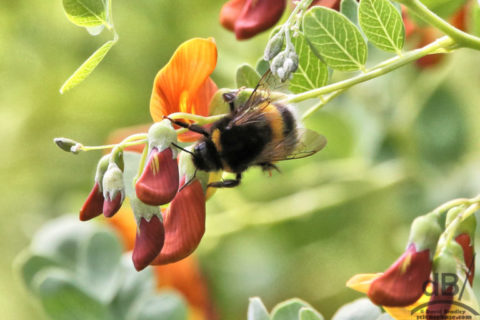First, I should state up front, I don’t like honey. It makes my throat tingle and itch if I eat it raw, it’s fine if it’s a small amount blended into a marinade or in Crunchy Nut Cornflakes (always two bowls). I suspect I’m allergic to it. I remember eating honey on toast as a student, it was a friend’s favourite lunch between lectures and practical sessions (of which, back in the day we had four, 3-hour sessions a week, all paid for by the taxpayer, thank you very much). That honey on toast always made me feel sick, but perhaps not as sick as taxing higher education as they do now through the incredibly exploitative student loan system. Anyway, the bees…what about the bees?

Well, in the wake of beekeepers and others noticing a condition known as bee colony collapse disorder, environmentalists latched on to a group of insecticides known as neonicotinoids (neonics), that were blamed for this problem. The neonics were developed as an alternative to organophosphate and carbamate insecticides and have a much, much lower toxicity to birds and mammals, but are, by definition toxic to insects including those that would otherwise eat our food crops. Whether or not they or their breakdown products are toxic to bees remains an open question. It seems that colony collapse was rife even in areas that had banned neonics and it is possible that the underlying cause is a pathogen carried by mites that infest hives.
Anyway, one of the big problems with the campaign against neonics is that it is often claimed that without the bees we’d starve. Bees pollinate plants, we need that action to grow crops…well, yes, we do. But bees are actually not greatly efficient pollinators, they are quite promiscuous and will visit lots of different species of plant and catch pollen from lots of different flowers and leave behind some of that mixed bag of pollen on subsequent flowers they visit, this is especially true for plants that are non-native to the local bees.
But, more importantly, bees don’t pollinate the crops on which we mostly rely for our daily bread, rice, and roots. Think back to first-year high school biology lessons and you’ll recall that while some plants are pollinated by animals, the birds and the bees, and others, the plants that we call our staple food crops – rice, wheat, corn, sorghums, millet, rye, barley, tomatoes, potatoes, sweet potatoes, cassava – are wind or self-pollinated. Bananas and coconuts are artificially propagated. They don’t need an invertebrate third party to spread their seed, as it were. Other crop plants including root vegetables and rabbit food salad crops do not require pollination at all to produce a crop, although obviously, they do for seed production (which can be done manually en masse or by non-bees, including midges and other flies. Don’t forget the flies! That claim from the 1970s, long before neonics, when bees were on the decline suggested that a third of our food relied on bees was bogus, to say the least.
Bees are seen as the superstar pollinators but a quick search reveals that they are modest pollinators of most other crop plants that need an insect in their sex life, with the exception of kiwi and passion fruit, Brazil and macadamia nuts, melon and squash, and a few others.
Now, I am not suggesting that we should deliberately kill the bees. We should look after our ecosystems. We have ruined and human activity in this area is nothing to be proud of in so many ways. Yet the hyperbole surrounding the bee beggars belief. Oh, and one more thing, since large-scale colony collapse disorder (up from 15% 20 30%) was first reported by commercial beekeepers in 2006, there has been a massive increase in the total number of bee colonies, in the US for instance, where beekeepers compensate for losses over the winter by actively splitting and propagating colonies. In the meantime, those neonics continue to protect crops from pests, without affecting birds and mammals in the way with which Rachel Carson was so concerned in The Silent Spring.